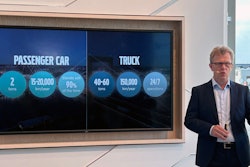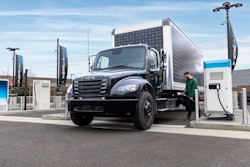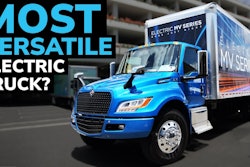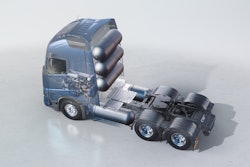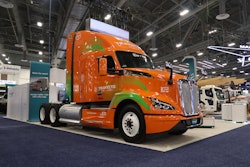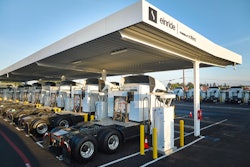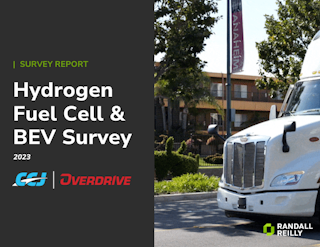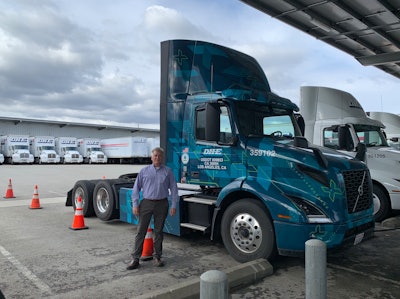
It’s been nearly three years since Dependable Highway Express rolled out Volvo VNR Electric trucks at its location in Ontario, Calif.
Originally part of the Volvo LIGHTS (Low Impact Green Heavy Transport Solutions) pilot which ended last year, DHE continues to run three Volvo VNR Electric tractors powered by a vast array of roof-mounted solar panels that on average provide 3 megawatts of power daily.
That power is also used to power electric yard tractors and forklifts. Employees who drive their EVs to work can charge up at no cost.
It’s all part of a cutting-edge system that continues to prove rewarding, challenging and thought provoking for DHE’s director of process improvement Troy Musgrave.
Sitting at the same table where three years prior executives from Southern California Edison, Volvo Trucks and DHE discussed how to bring electric VNRs to their Campus Avenue facility, Musgrave recalled one of their first conversations.
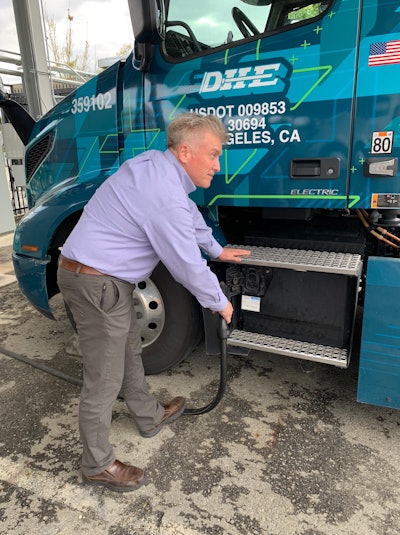
But they set out to learn and kept pressing on through the pandemic until they had the answers and equipment they needed. Musgrave looks back thankful and impressed with Volvo’s leadership.
“One of the things I admire about Volvo's approach is that they didn't just say, ‘Let's make some electric trucks, and here you try them.’ They said, ‘Let's think about this as an ecosystem.’”
Volvo brought in Southern California Edison, Volvo Truck dealers and their technicians, votech leaders, solar contractors, charging manufacturers and construction contractors.
“All these pieces were brought in. We tried to build it up so that we had at least something from everything so that we could make it work,” Musgrave said.
And make it work they did. DHE’s electric VNRs began running from Ontario to warehouses throughout Southern California in 2020 and continue to do so today following the end of the LIGHTS project last August.
“It was their concept and we just kind of rolled with it. Their concept was, ‘Let's, what would it be like to electrify a whole freight facility?’ Obviously we didn't go full throttle with the trucks but we replaced all the propane forklifts here with electric. We had two diesel yard goats. Those are gone. We used a hundred percent electric there. We also put out Level 2 chargers for employee parking.”
While the bulk of the charging has been done at its Ontario location, DHE has leaned on Volvo Trucks North America TEC Equipment dealership in nearby Fontana for occasional top offs.
“They’re the same chargers,” Musgrave said. “We’ve gone over there a couple of times to them and hit their charger for 30 to 45 minutes and then driver went about on his P&D.”
Room for improvement
As with any cutting-edge technology, Musgrave knows there’ll be opportunities to learn and improve. One of the bigger areas is around actual EV use. There’s just not a lot of data on electric trucks.Musgrave recalled raising that point at the Advanced Clean Transportation Expo in Anaheim in May.
“One thing I was telling people at ACT was that diesel trucks are built for a million miles. We've got a lot of trucks that have gone a million miles or close to a million miles and in that time when all these trucks were doing that, we found bugs and we fixed them. We made improvements and the diesel truck today is much more efficient and cleaner,” Musgrave said. “Still we need [zero emission vehicles]. We've got an urgency to make some correction for the planet. We have to do more but my point is what electric truck do we have that has a million miles?”
The absence of long-term data for electric trucks also gets into total cost of ownership considerations. Though OEMs regularly point to lower maintenance costs associated with EVs versus internal combustion, Musgrave said it’s far too early to tell just how TCO will add up. In the meantime, a general maintenance agreement does not recognize those potential savings.
“Just hypothetically, if the diesel tractor costs a thousand dollars a month, then show me a general maintenance agreement on electric that's only $500 a month. They won't do it,” Musgrave said. “You've got a whole supply side that has to be paid, whether it's electric or diesel—those technicians, those parts, those bays, brick and mortar…all of those things have to be paid for, right? So they're not going to just give you 50% off their general maintenance agreement.”
Even if the GMA reflected a savings, the cost of doing business with EVs can run high and offset those savings Musgrave said with expenses like annual charging fees. Shopping around can save big bucks. Musgrave was able to land a contract for a $3,000 annual charger maintenance fee versus another quote at $30,000.
There’s also a vital need to bolster power systems to step up the flow of electrons to not only meet growing charging demands for more and more EVs, but also to step up reliability.
Though DHE’s solar setup includes a 130kWh battery that’s charged to help offset higher energy prices during peak use times, it can’t provide enough power to handle all the electric trucks, forklifts and building when the power goes out. DHE has a 100kW diesel generator that was installed before the panels but that’s used for the building and like the battery is not nearly strong enough to charge all their EVs.
“What I think we could have done better is provided some support for when there are interruptions to service. We need to be able to charge forklifts. I'm not even worried about the trucks right now because we only have a few but with the forklifts [unable to charge] you have a high potential to either slow down the operation or shut it down completely and as that has happened.”
An outage earlier this year caught DHE off guard.
“It was between four and five hours,” Musgrave said. “Just all of a sudden the lights went out. And the year before we had one. Usually it’s related to somebody digging and hitting the line, or somebody hits a big primary power pole and they have to shut down a section. It's those kind of things.”
As DHE expands its electric fleet at Ontario and elsewhere, having enough power in general will be a challenge.
“When it comes to electrifying this fleet, we're going to need about 30 to 40 megawatts, and I'm going to have to rely on the utility to bring it. I don’t have enough solar on this property to bring that kind of power,” Musgrave said.





